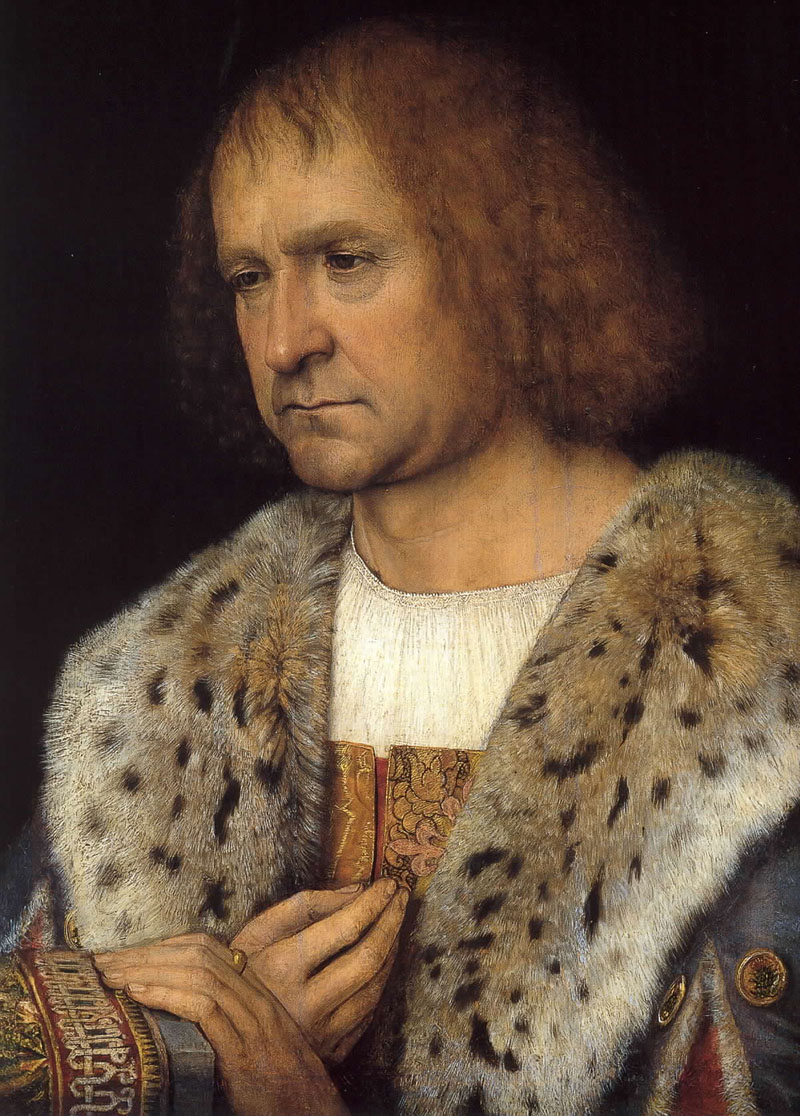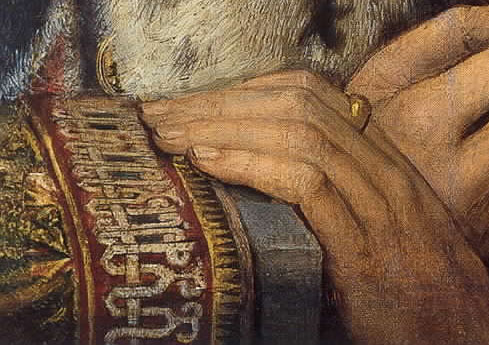
Historical
Oriental Rugs & Carpets
in Medieval European Paintings
Main Page
|
|


Portrait of Diego de Guevara (?)
(c. 1515 - 1518)
by Michel Sittow (c.1469–1525)
Michel Sittow, a northern painter who was born in
Estonia on the Baltic Sea but apprenticed in Bruges, was an acclaimed
portraitist at the Spanish court. After Queen Isabella's death in 1504, his
peripatetic career took him to several northern European centers, including
Burgundy, where he probably painted this portrait.
The sitter gazes with serious mien, not at the viewer, but at an unseen point
beyond the picture's frame. The ornate carpet covering the stone parapet on
which his hand rests provided scholars with an important clue that led to the
discovery of the object of his concentration -- a painting of the Madonna and
Child, of similar dimensions, in the Gemäldegalerie in Berlin. In that panel a
larger portion of the parapet, covered by the same carpet, appears as a support
for the Christ Child. It seems certain that the Berlin and Washington panels
were originally hinged together to form a devotional diptych.
Circumstantial evidence suggests that the National Gallery's portrait represents
Diego de Guevara, a nobleman whose family came from Santander in northern Spain.
For forty years Don Diego was a valued member of the Habsburg court in Burgundy.
Supporting this identity is the embroidered cross of the Spanish Order of
Calatrava on his golden doublet; after serving in numerous positions of trust in
the households of Philip the Fair and Charles V, Don Diego was appointed to the
wardenship of that order.
Provenance
Probably Don Diego de Guevara [d.1520], Brussels; probably heirs of Don Diego de
Guevara. Probably Mencía de Mendoza, Marchioness of Zenete [d. 1554], third wife
of Hendrik III of Nassau and subsequently wife of Fernando de Aragon, Duke of
Calabria and
...
Medium
oil on panel
Andrew W. Mellon Collection